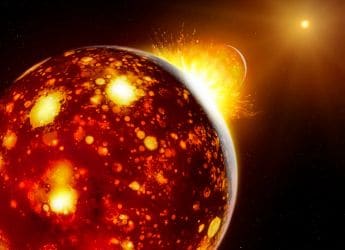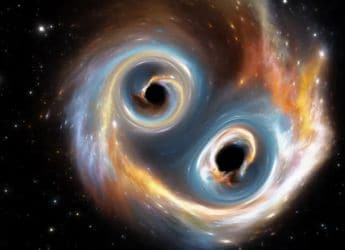- Home
- Science
- Science News
- Scientists Solve the Mystery Behind LIGO’s “Forbidden” Black Hole Pair
Scientists Solve the Mystery Behind LIGO’s “Forbidden” Black Hole Pair
GW231123 revealed two merging black holes in the mass gap.

Photo Credit: NASA
LIGO’s GW231123 finds mass-gap black holes. Fast-spinning, magnetized stars may collapse to form them
Late in 2023, LIGO and Virgo detected an extraordinary event – a collision between two massive black holes, each weighing around 100 times more than the Sun. By the current understanding, stars of this size should explode entirely, leaving no black holes behind, which creates what scientists call a 'mass gap'. But this event, dubbed GW231123, appeared to challenge that idea. Recently, though, some computer simulations have shown that stars that spin quickly and have strong magnetic fields can actually collapse into black holes, even when they're in that 'forbidden' mass range.
The forbidden merger
According to the observatories' records in November 2023, GW231123 was a gravitational-wave signal from two merging black holes of roughly 100 and 130 solar masses. This put them in the 'mass gap' (70–140 solar masses), where stars should end in a violent pair-instability supernova, leaving no black holes. Experts thus called these black holes "forbidden," because theory predicted no black hole could survive from a star of that size. Finding this double merger was a surprise, defying previous expectations.
Spinning stars and magnetic fields
New simulations by researchers at the Flatiron Institute made them discover that everything is different with rapid rotation. When a huge star is rotating fast, it forms a rotating disk around the black hole that is being formed. The magnetic forces in this disk disperse the gas of the star to a large extent, and hence the black hole is left significantly smaller compared to the core. This leads to a black hole moving into the mass gap. This naturally created a black hole of greater mass and slower spin and another, lighter, faster-spinning black hole - just what GW231123 had predicted.
Get your daily dose of tech news, reviews, and insights, in under 80 characters on Gadgets 360 Turbo. Connect with fellow tech lovers on our Forum. Follow us on X, Facebook, WhatsApp, Threads and Google News for instant updates. Catch all the action on our YouTube channel.
Related Stories
- Samsung Galaxy Unpacked 2025
- ChatGPT
- Redmi Note 14 Pro+
- iPhone 16
- Apple Vision Pro
- Oneplus 12
- OnePlus Nord CE 3 Lite 5G
- iPhone 13
- Xiaomi 14 Pro
- Oppo Find N3
- Tecno Spark Go (2023)
- Realme V30
- Best Phones Under 25000
- Samsung Galaxy S24 Series
- Cryptocurrency
- iQoo 12
- Samsung Galaxy S24 Ultra
- Giottus
- Samsung Galaxy Z Flip 5
- Apple 'Scary Fast'
- Housefull 5
- GoPro Hero 12 Black Review
- Invincible Season 2
- JioGlass
- HD Ready TV
- Laptop Under 50000
- Smartwatch Under 10000
- Latest Mobile Phones
- Compare Phones
- Lava Agni 4
- Wobble One
- OPPO Reno 15 Pro
- OPPO Reno 15
- Vivo Y500 Pro
- Realme GT 8 Pro Aston Martin F1 Limited Edition
- Huawei Mate 70 Air
- Moto G57
- Asus ProArt P16
- MacBook Pro 14-inch (M5, 2025)
- iQOO Pad 5e
- OPPO Pad 5
- Fastrack Revoltt FR2 Pro
- Fastrack Super
- Acerpure Nitro Z Series 100-inch QLED TV
- Samsung 43 Inch LED Ultra HD (4K) Smart TV (UA43UE81AFULXL)
- Asus ROG Ally
- Nintendo Switch Lite
- Haier 1.6 Ton 5 Star Inverter Split AC (HSU19G-MZAID5BN-INV)
- Haier 1.6 Ton 5 Star Inverter Split AC (HSU19G-MZAIM5BN-INV)

















